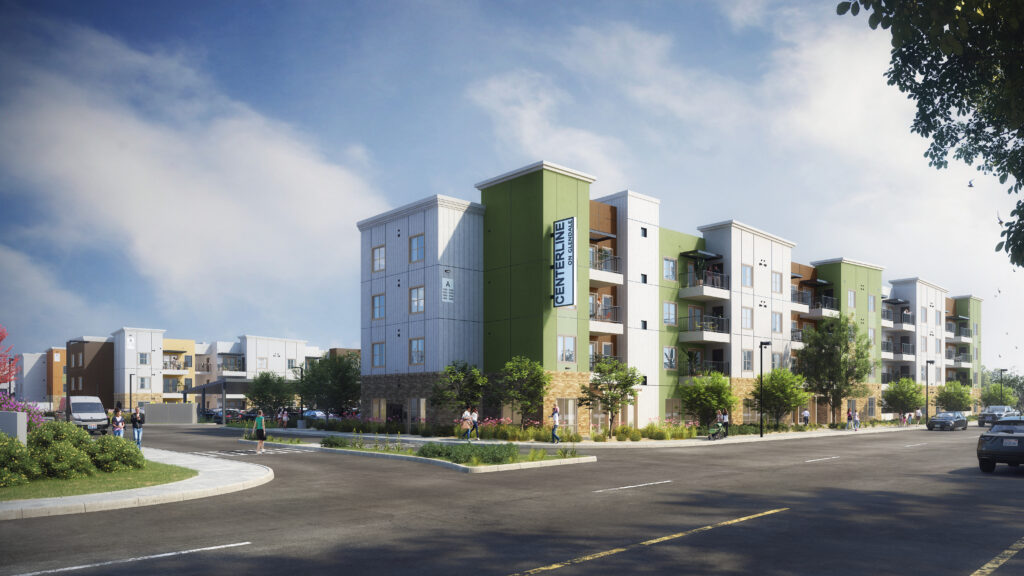Innovative LIHTC Programs Become a Powerful New Tool
State Tax Credits Work in Harmony with Developer’s Capital Stack

By Abram Mamet
9 min read
As challenges continue to buffet the low-income housing market, an increasing number of states are implementing their own versions of a Low Income Housing Tax Credit (LIHTC). According to a recent Novogradac report, 17 states have added completely new state tax credit programs since 2013, resulting in a total of 29 states and Washington, DC having unique LIHTC incentives.

Though some are more robust than others, these state tax credits can work in harmony with the rest of a developer’s capital stack across a wide range of low-income housing projects. “It’s such a flexible resource and can solve different types of problems in different communities,” says Brian Swanton, president and CEO of Gorman & Company. For example, a state with significant rural housing needs might incentivize the credits used by rural builders, helping divert the type of projects that might otherwise only get built in city centers into communities with similar, but under-addressed, housing needs.
However, even states without unique needs would probably benefit from a state tax credit program, says Chris Hite, CEO of Sugar Creek Capital. “The state housing credit makes sense where the federal credit makes sense, which is pretty much everywhere.” This is especially true today, with building costs across the country having become too expensive to result in naturally occurring affordable housing. “Materials just cost too much. If you’re going to create low-income housing, you almost always need an outside infusion of cash other than what rents can support.”
The state tax credit is not necessarily a novel resource, and many states have had their version of the program for many years.
One of the first state tax credits was enacted in Missouri, which passed its earliest version of the program in 1990 to work in tandem with the then-novel federal tax credit. Hite, who worked in the Missouri state capitol around that time, recalls that the impetus for Missouri’s program was to incentivize tax credit investments in rural housing developments, where “it was really hard to make deals work.” At that time, as Hite recounts, “There weren’t any boosts to your eligible basis, other than Qualified Census Tract and Difficult Development Areas. And the rents in a rural project don’t create enough cash flow – they barely cover operating expenses. So, you can’t have any debt. And the investors in a rural area were so minimal that you had to identify lots of soft funds to make a rural deal work. The idea was to patch that.”

Today, these programs can vary widely and can range in annual credit caps from $250,000 in Arkansas to $570 million in California. Some states, like Georgia, don’t operate with annual caps but instead offer percentage matches of the federal credits a project receives.
Though states have more flexibility to experiment with the structure of their localized credit, Hite says that in this case, creativity can often cause more problems than it can solve, and that the most successful and long-lasting state credits have a simple structure that mirrors the Federal LIHTC program. Indeed, the Affordable Housing Tax Credit Coalition’s recently published recommended practices for state credits name simplicity as the number one rule, with an emphasis on following established federal program guidelines coming close behind. By adhering to these two tenets, states allow their existing authorities to interface with the new program most effectively. “Don’t oversubscribe a bunch of regulatory pieces to the legislation,” says Swanton. “Let the state government staff establish the rules and priorities based on public input just like they do with the federal credit – that’s what they’re good at.”
In recent years, interest in State LIHTC programs has boomed. This is largely due to the lingering effects of inflation, says Hite, which has not only caused a rapid increase in shelter costs for tenants but has also resulted in healthy budget surpluses for most states. “Inflation is a good thing if you’re a taxing entity. Because it doesn’t necessarily mean your expenses have gone up, but it certainly means your income will go up.”
Although there are a few options for states looking to utilize those budget surpluses to tackle the burdens of the rental market, Hite says states are increasingly realizing the power of a bespoke LIHTC program. “You could do a loan, but the loans must be shown as getting paid back, and that’s hard to do in a limited rent situation. And you could do a grant, but a grant is either going to be income to these projects or will reduce their eligible basis, which will reduce the amount of federal credit. So, it’s counterproductive.” The obvious answer, then, in most situations is to “create state tax credits to create more equity.”
A Spotlight on Arizona
One location with a relatively new State LIHTC program is Arizona, which comes as the state has rapidly transitioned from being one of the most affordable housing markets in the country to one of the least affordable. Further, unlike some states with long histories of low-income housing needs, Arizona doesn’t have tax-increment financing, redevelopment authorities or other creative mechanisms for local funding sources that can mix into a project’s budget. Besides federal funding, “Arizona doesn’t have a lot of other state or local tools to finance low-income housing like we see in other states,” says Swanton.
Enacted in 2021 and slated to sunset at the end of 2025, Arizona’s LIHTC program allocates $4 million of ten-year credits split evenly between urban and rural projects, with allocations capping at $1 million per project. Though the program is on the smaller end of the State LIHTC spectrum, it has already had a significant impact, with Gorman & Co. receiving funding for four separate projects that will eventually result in 698 total new units in both rural and urban municipalities.
The largest project that Gorman & Co. is currently undertaking because of the Arizona state tax credit is known as Centerline, a 368-unit, mixed-income development located in the city of Glendale, just outside of Phoenix.
The first project funded by the Arizona state credit, Centerline, swept the $2 million allocated for urban funding in 2022. The allocation was received in April of that year, and about 11 months later, the project closed and broke ground. It is a prevailing wage project.
Today, Swanton estimates that construction is about 65 percent complete.
One unique aspect of the Centerline development is its major impact on the residents in need of Permanent Supportive Housing (PSH), and Swanton estimates that it will become one of the largest PSH developments in the country. “It’s not often that you incorporate PSH into a large four percent, new construction project,” he says.
This situation came about when the team at Gorman & Co. was looking for more money to fund the project in combination with Federal and State LIHTC. “We went to the state’s Arizona Health Care Cost Containment System (AHCCCS), which administers Seriously Mentally Ill (SMI) vouchers. They have a hard time placing those because the rental market is so tight. We partnered with them, and they brought 40 Project Based Vouchers (PBVs) to the project. In return, we committed for 20 years to provide 40 units to their SMI population. They’ll provide the rental subsidies under a long-term, project-based rental assistance contract.”
Gorman & Co. also partnered with the city of Glendale to assist with the utilization its regular Section 8 program, providing housing for 80 vouchers on a 20-year contract. In tandem with the federal income averaging fix, Swanton says that this was able to help incorporate more desperately needed 30 percent area median income units within the project. “We didn’t originally underwrite it as an income averaging deal, but once they fixed the income averaging issue through the U.S. Department of the Treasury, and we had already secured the PBVs, we switched at the last minute to an income averaging structure. That created much more debt proceeds for the project, which closed our funding gap.”
Though the capital stack for the project is heavily mixed, Swanton recognizes that Gorman & Co. “wouldn’t have pursued this project without the state credit.”
Because of the strong foundation that the state credit provided for the project, many resources were able to come together to try “to help not just produce large numbers of new units, but also help solve the homeless crisis that we’re facing.”
Though the state tax credit has had an immediate impact, efforts to extend the life of the program and increase its scope have been an uphill battle. Though two state LIHTC bills were working through the legislature with broad bipartisan support, both died in committee. Swanton largely attributes this to a statewide budget deficit, noting that state lawmakers are hesitant right now to fund a program that may cost the state money it seemingly doesn’t have. The continuation of the program now hinges on complex budget negotiations between the legislature and the governor’s office.
However, an early study of the Centerline project from economist Elliott D. Pollack suggests that rather than costing the state money, developments using State LIHTC assistance actually generate more tax revenue than they cost. For Centerline, this means that the $20 million in state tax credit benefit will produce $30 million in new tax revenue during the same period.

Swanton says that it is now up to legislators to recognize the generative potential of the state’s tax credit and lean into it as a source of revenue, rather than stunt a growing program. “This program must continue, or else we’ll lose the momentum with the investment community and investors will start looking elsewhere. We have got to build up the program, make it larger, and make it more permanent.”